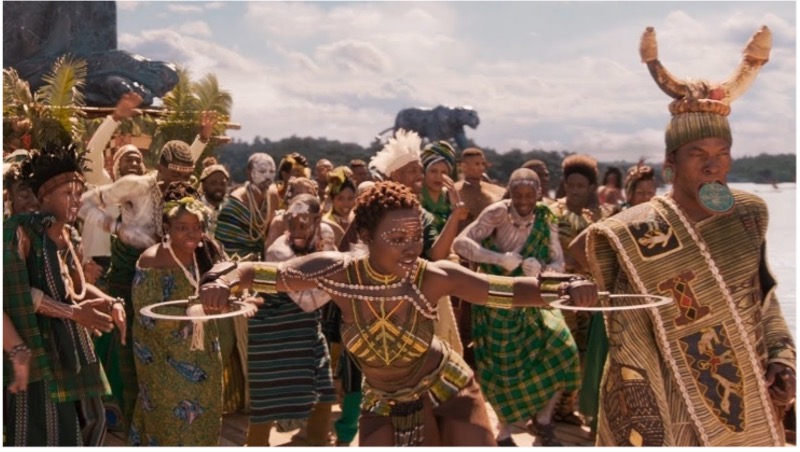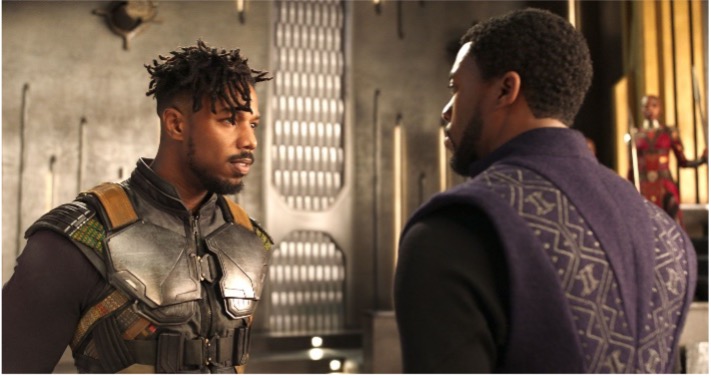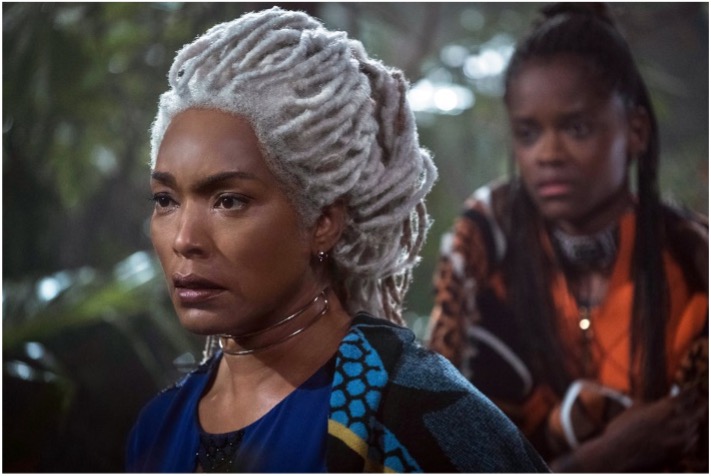Black Panther – and I will not hesitate to fight anyone on this – is one of the best and perhaps most underrated Marvel movies out there. It provides entertainment for Marvel fans and non-fans alike through its humour, fast-paced action and engrossing graphics whilst avoiding a clichéd love interest (although shoutout to Nakia and Black Panther for having the ultimate relationship goals). But honestly, if you don’t adore Marvel, then what are you doing with your life?


I don’t have to try hard to link this movie with Black History Month because of its display of the beauty and power of African culture and traditions throughout the film. Being a feminist, I have to start off with those fierce Wakandan women who managed to give me goosebumps with their formidable strength and energy (not to forget their cool spears). In the movie, their captivating tribe is named Dora Milaje, based upon a real tribe of fighters called the Dahomey Amazons. This female crew existed from the 1660s until 1904 and were thought to be superior in efficacy and valour to male armies at the time. This uncommon notion of an all-female warrior army is one of the many things that makes Black Panther so vital in the empowerment of Black women – their undying loyalty for the King and Wakanda reflects the legend of the Dahomey Amazons who were fearless in their battles and in their role as the Royals’ bodyguards in the West African Empire.



Black Panther shows off the vivid and colourful tribes of Africa with its celebration of heritage through dance, language, music, clothes, and hairstyles. To name but a handful of the many African-inspired cultural aesthetics used in this film is a challenge I will try my best to take head on. Vibrant blanket cloaks worn by Wakanda’s farmers signifies the Sotho people, native to Southern Africa (Lesotho). The unique attire (known as the Basotho blanket) was traditionally worn around the waist or shoulders to protect one from the cold – as shown in the movie. Nigerian influences include the “Wakandan” text on the throne room walls which are known as Nsibidi symbols (rarely used today) and a Southeast Nigerian relic of Igbo (Michael B Jordan’s character steals this at the very start), which is traditionally used in local rituals. Other influences range from the lip-plates and makeup to architecture inspired from all over Africa. These all influenced Wakanda’s designing process and draw on the diversity of the African community.
Black identity is represented rather creatively in the film through gazing into a futuristic world with wacky inventions and innovative advancements never seen before (credits to Shuri and her lab – what an iconic character). Wakanda represents a nation that is rooted within its people and culture and highlights a move from past colonization to an optimistic outlook of the future. Michael Jordan’s role (Erik Killmonger) as the antagonist is perceived as incredibly powerful in evoking feelings of controlling one’s own destiny and fate – something that Wakanda can do with their resources of Vibranium and weapons of technology.
He says to T’Challa (Black Panther himself): “Y’all sittin’ up here comfortable. Must feel good. It’s about two billion people all over the world that looks like us. But their lives are a lot harder. Wakanda has the tools to liberate ’em all.”
These words caught my attention immediately in the way in which it can be used to demonstrate the reversal in oppression to the Black community, and how the Wakandan community now has the freedom to liberate others. This refreshing idea of futuristic buildings and resources grasp on Wakanda’s cultural and paradise-like world, in which liberalism (finally got to throw in that A-level Politics terminology) is a fundamental principle.


Now it’s time to justify why the hairstyles in this movie are, quite frankly, the greatest part of all. It symbolizes the Natural Hair Movement of the 1960s (and more recently 2000s) with an aim to encourage all Africans to embrace their natural hair. Black Panther’s stylists hence use the movie to celebrate this expression and the movement’s beauty and power, with the various Africa-afro styles.


In conclusion: Black Panther rocks and is simply revolutionary. Go watch it if you haven’t. If you have (well done); I hope you’re also waiting with bated breath for the sequel – Wakanda Forever. And I strongly recommend dressing up as a Wakandan Warrior for Halloween (no doubt you’ll win all those group costume prizes). Finally, I suggest reading more about Black Panther’s influences, as it really does embrace African and Black culture brilliantly.
